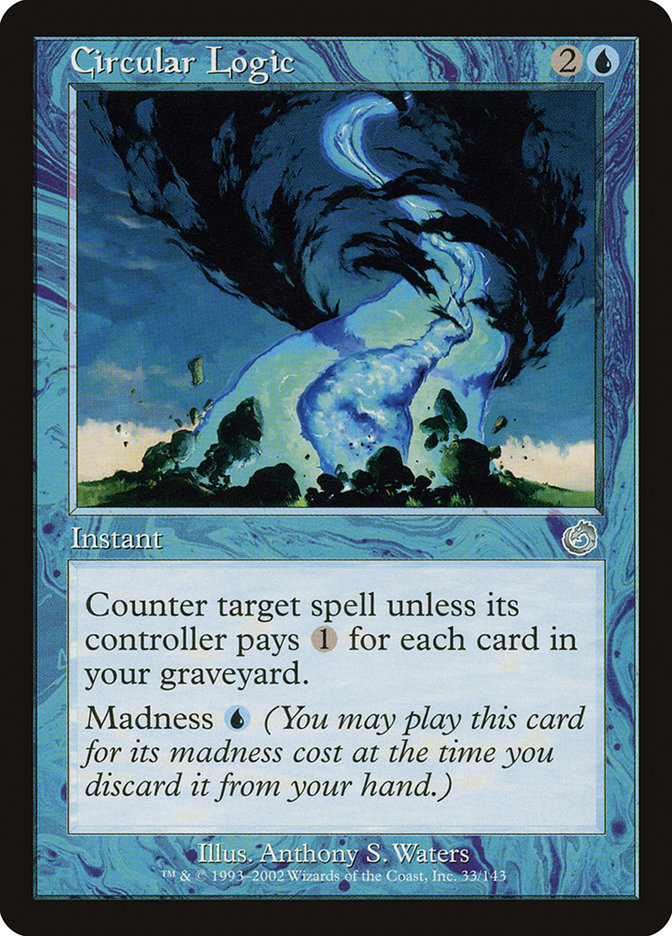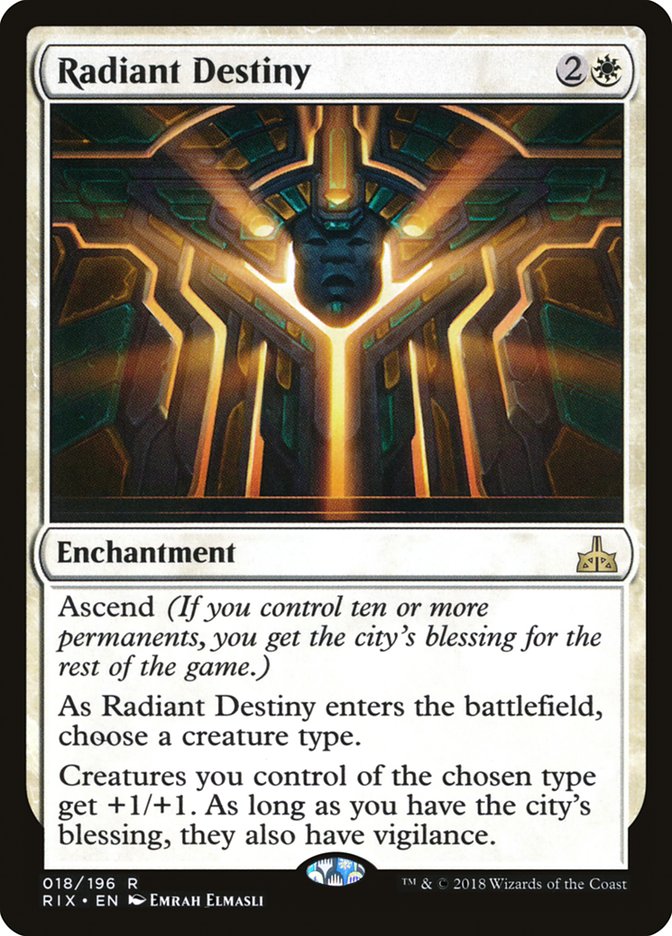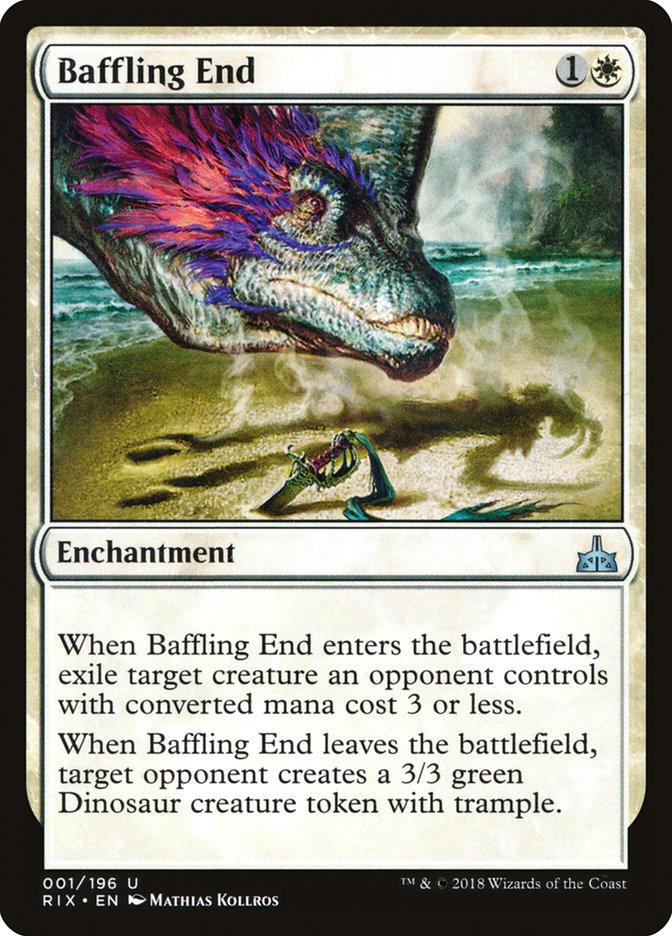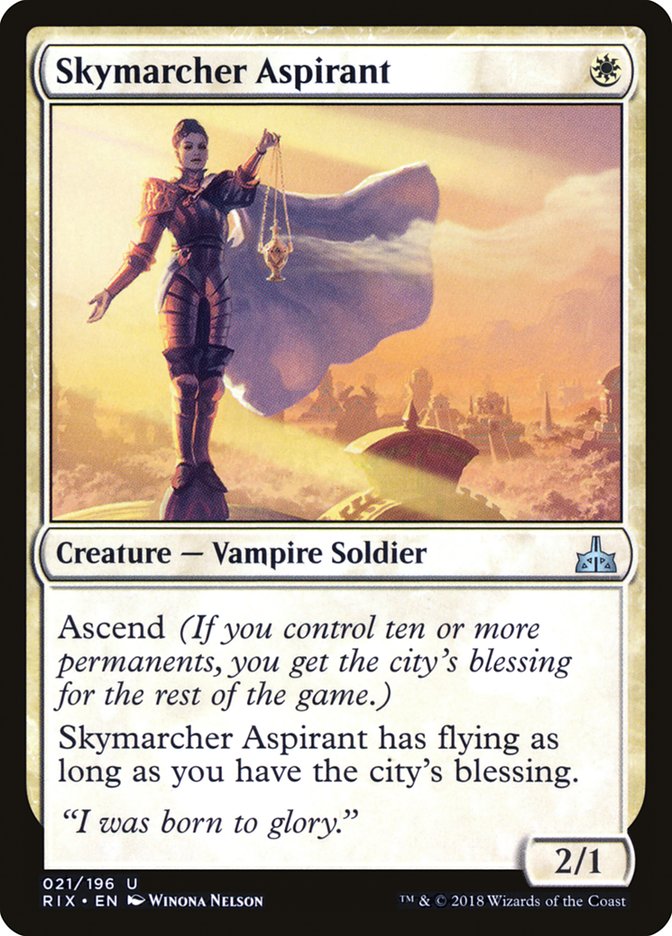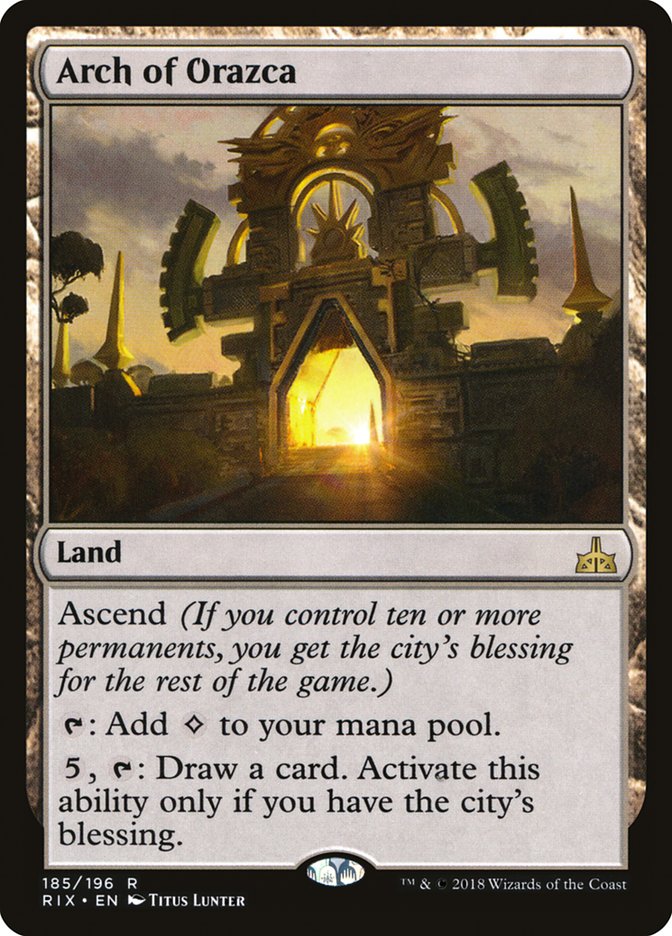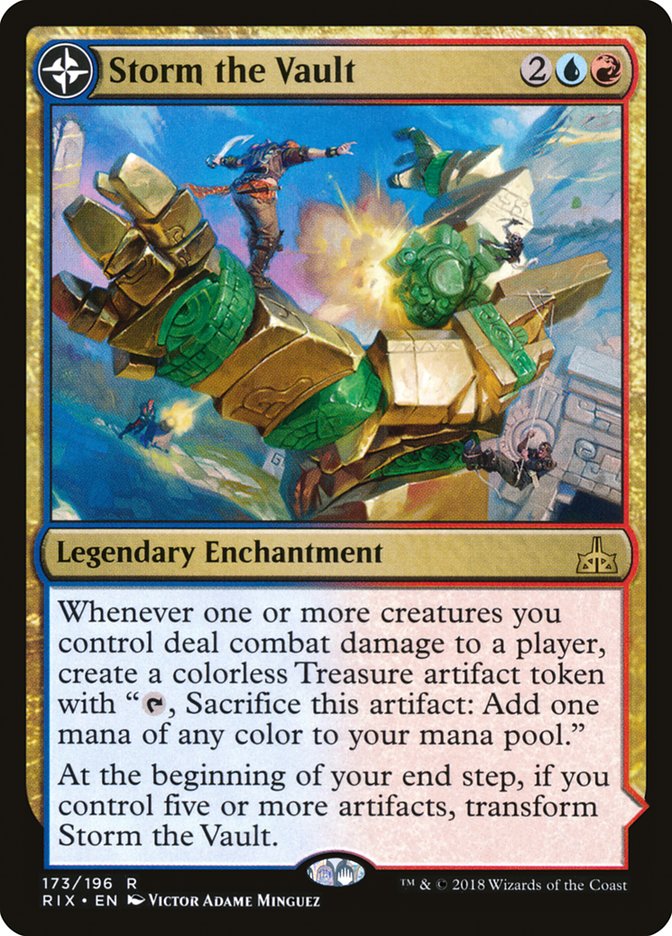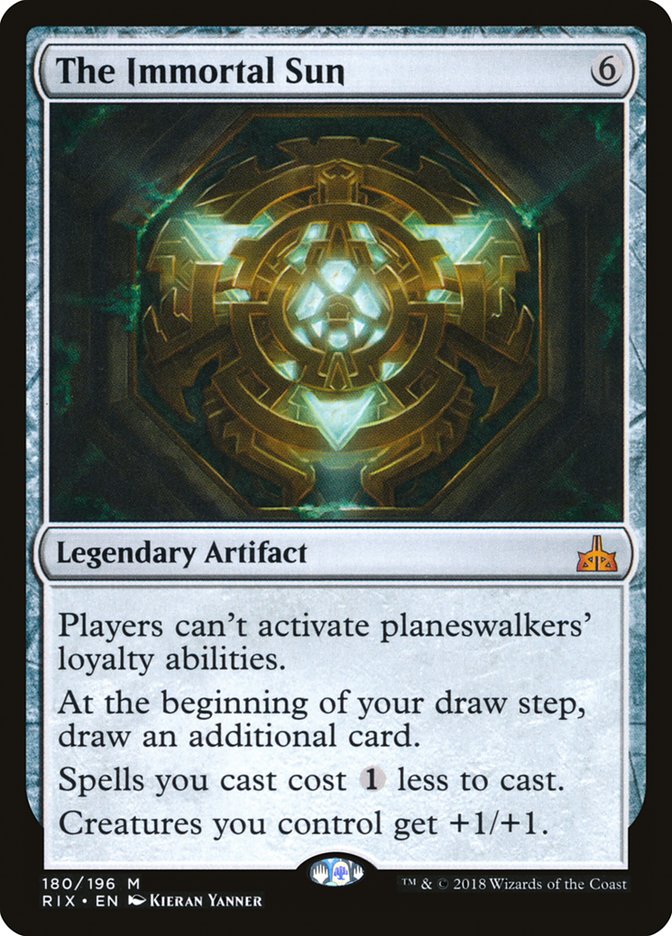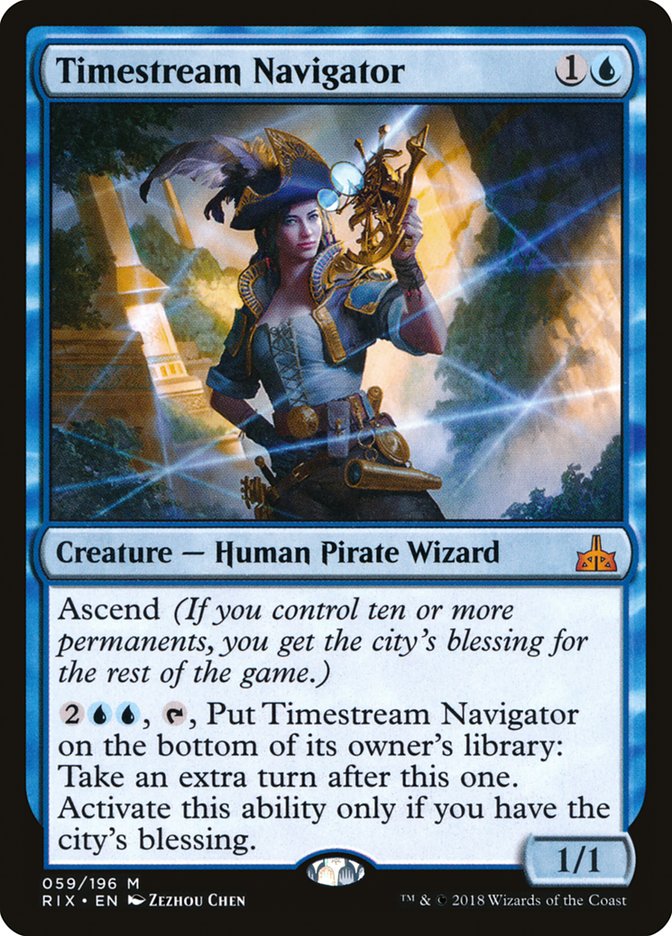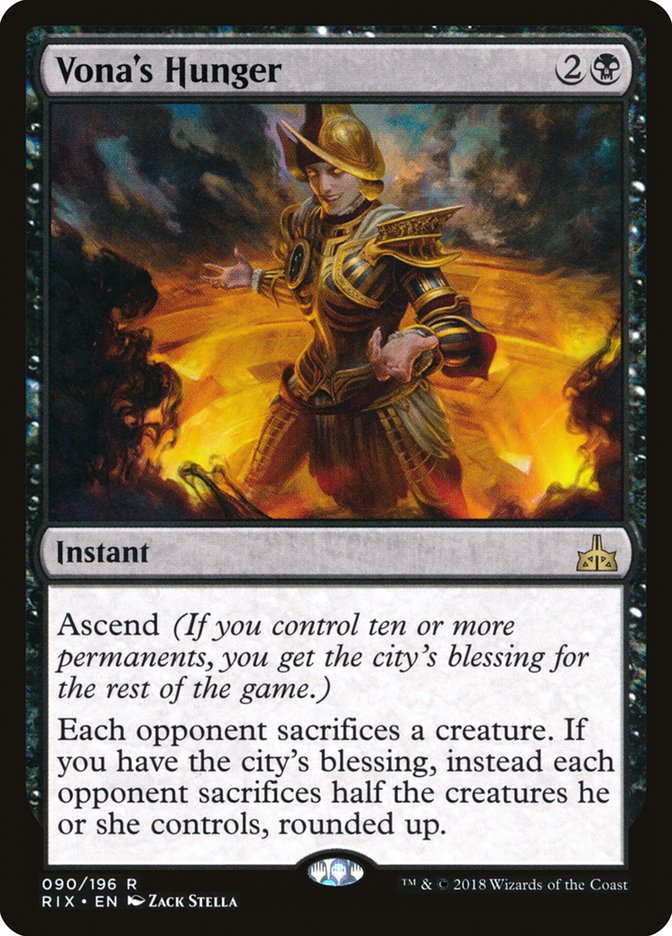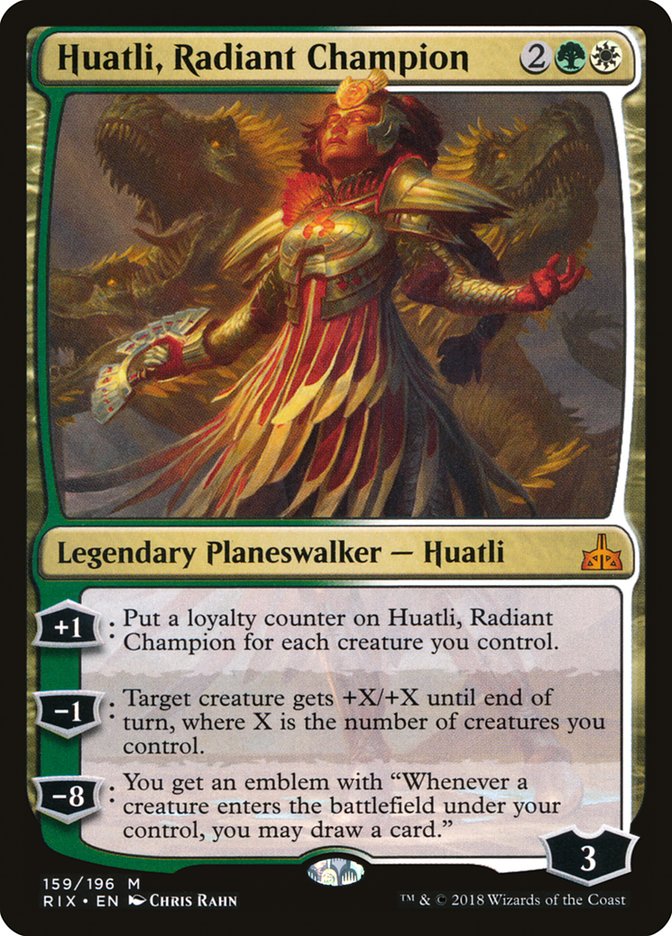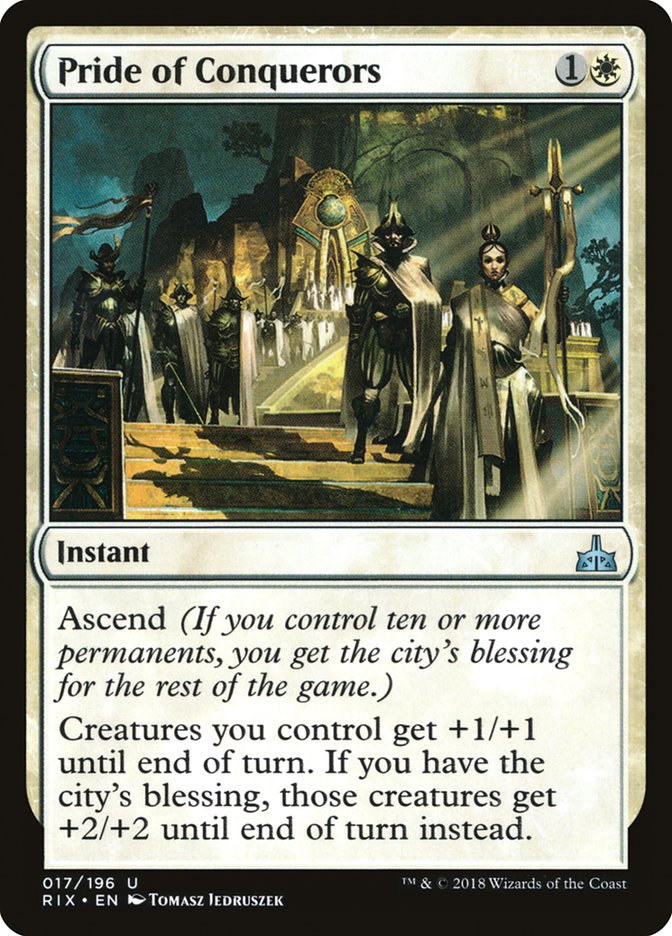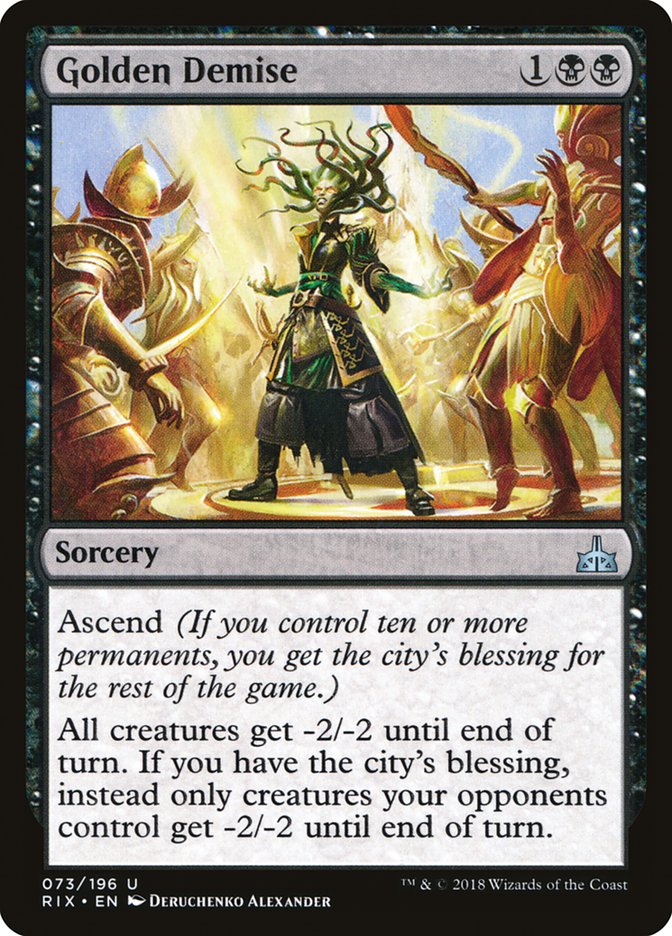Rivals of Ixalan
is upon us! The full card list is out, and with the #SCGDFW Team Open
including Standard with Magic’s newest set, figuring out the newest
technology is necessary from the get-go. Normally, early Standard
tournaments can be a bit more a gamble, and it can be better to play it
safe for the sake of not completely bombing out of a tournament, while
settling for a 10-5 record or so.
The people who are rewarded are those that break out a bit more and figure
out the best way to play new cards with one another. Looking at the last
Open in Dallas featuring new cards, Andrew Jessup crushed the event with a
Sultai Energy deck that was built around Hostage Taker:
Creatures (27)
- 4 Longtusk Cub
- 4 Winding Constrictor
- 2 Rishkar, Peema Renegade
- 4 Glint-Sleeve Siphoner
- 4 Rogue Refiner
- 4 Walking Ballista
- 1 The Scarab God
- 4 Hostage Taker
Lands (21)
Spells (12)
Sideboard

Along the way to winning the tournament, Jessup had to go through the
deckbuilding master of the SCG Tour, Brennan DeCandio, playing Hostage
Taker in a totally different shell:
Creatures (26)
- 4 Angel of Invention
- 4 Minister of Inquiries
- 4 Walking Ballista
- 4 Champion of Wits
- 4 Hostage Taker
- 2 Vona, Butcher of Magan
- 4 Seekers' Squire
Lands (23)
Spells (11)
Sideboard

If there’s anything to be taken from that tournament, it’s that fortune
smiles upon those who take risks. Sure, it’s easy to jam a stock Temur
Energy list and accept that cashing the event is good enough, but have you
considered winning it instead?
Both of the decks that Jessup and DeCandio were playing weren’t completely
new at the time. They had just found new ways to update decks that were almost there and now had new toys to play with. G/B Constrictor
was a deck for a long time before Hostage Taker came out of a pack, and Zac
Elsik was barking up the God-Pharaoh’s Gift tree when Hour of Devastation was first printed.
Looking at older decks and seeing if they can be upgraded with tools in the
newest set is one of the easiest ways to have a deck that feels fresh and
attacks from an angle the format may be unprepared for, without having to
start building something from the ground up. The end result ends up being
something a little more refined than something in its early stages, and is
something better-equipped to fight against the streamlined decks that
people will be forcing from the previous format.
Pro Tours tend to provide an enormous wealth of information to mine. With
Pro Tour Ixalan being the most recent one, it’s the most natural
place to start looking for decks that may have been successful on the short
term, but died out over time.
Creatures (24)
- 3 Angel of Invention
- 4 Aviary Mechanic
- 4 Metallic Mimic
- 3 Mavren Fein, Dusk Apostle
- 2 Duskborne Skymarcher
- 4 Legion Conquistador
- 4 Adanto Vanguard
Lands (22)
Spells (14)

Wilson Hunter is a known ringer from the southeastern portion of the United
States, and despite an 8-2 record during the Standard portion of Pro Tour,
his Mono-White Vampires deck has fallen by the wayside. Why?
It likely has a lot to do with how susceptible the deck can be to sweepers.
Beating the Approach of the Second Sun control decks seems nearly
impossible. Without the Selfless Spirits and Spell Quellers that the older
Oketra’s Monument decks had access to, it seems like beating multiple
Fumigates and Settle the Wreckages is almost impossible.
What’s likely holding people back from playing this deck at this point is
that it hasn’t been putting up numbers…because it hasn’t been seeing
play…because it hasn’t been putting up numbers. Do you see the problem?
Sure, Abrade can be awkward for most individual creatures in the deck, as
well as the Monument, but there are so many “must-kill” threats in the deck
that it seems short-sighted to assume that a spot removal spell is what’s
stopping a deck with so many ways to go wide.
So what’s changing? What should we be looking at in Rivals of Ixalan to make this deck a real player? Another Anthem.
Tribal decks live and die by their payoff cards. A large draw to the
Mono-Black Zombies deck that Gerry Thompson won Pro Tour Amonkhet
with was how many ways that the tribe could make use of having a pile of
creatures with the same creature type line.
With Rivals of Ixalan giving this go-wide strategy a way to
benefit from having several creatures with the same creature type line,
it’s becoming harder and harder to ignore the strategy as a viable deck.
Radiant Destiny also has another aspect to it that’s quite attractive to
any deck looking for payoff cards: it’s hard to get off the battlefield.
Sure there are some answers to enchantments in the format, but they aren’t
widely played, and are awkward to maindeck as well.
In addition to a Glorious Anthem being a welcome addition to the deck, it’s
hard to imagine a deck better at gaining the city’s blessing than the
Oketra’s Monument + Legion Conquistadors deck.
On top of being a good card, Baffling End is a great answer to some of the
early creatures that can gum things up for an aggressive strategy. Baffling
End also plays to the aforementioned “enchantments are hard to deal with”
strength. At a certain point it even transcends that, and there’s a certain
acceptance that cards will eventually get answered, but it’s hard for the
opponent to have enough Naturalize effects to cover Oketra’s Monument,
Radiant Destiny, and Baffling End.
Holy one-drops, Batman! A reasonable first-turn play is one of the biggest
things that this deck was missing, and Skymarcher Aspirant is frequently
just a 2/1 flier for a single white.
The importance of the card in this style of deck is actually more paramount
than one may assume at a glance. Older versions of Oketra’s Monument decks
just used Thraben Inspector in the one-drop slot as a sort of roadblock,
hoping to progress to the later stages of the game, where their card
quantity could take over.
It’s a different story in this deck. Oketra’s Monument plays a role more
akin to Hordeling Outburst in this deck, and is meant to keep the pressure
going after Adanto Vanguard has gotten the ball rolling. Having a Savannah
Lions with upside increases the odds that Oketra’s Monument is backing
something up, rather than just starting the party.
Creatures (14)
Planeswalkers (3)
Lands (21)
Spells (22)

On the topic of easily gaining the city’s blessing, it seems important to
consider another archetype that puts cards on the table for the sake of
having permanents on the battlefield. Prophetic Prism isn’t really doing
much other than taking up space on the battlefield most of the time, and
there aren’t many cards better at filling up the battlefield (relative to
their investment) than Maverick Thopterist and Cogworker’s Puzzleknot.
This gives us a start. Arch isn’t necessarily doing anything game-breaking,
but it being a repeatable mana sink that is easily enabled by what the deck
is already doing makes it an easy thing to point towards. A colorless land
in a three-color deck may seem scary at first, but in a deck full of
Prophetic Prisms and treasure, it’s hard to sweat color fixing that much.
Storm the Vault gives Grixis Improvise a new angle of attack. Previously,
the deck could easily create a bunch of permanents and use those to cast
exclusively improvise spells ahead of curve. Now? The deck has access to a
four-mana Tolarian Academy. The big hurdle to clear here is figuring out
what the deck wants to do with that much mana. The first card that comes to
mind is The Immortal Sun, but what the deck really wants is a repeatable
mana sink; that way it can use the mana every turn.
This thing does everything. Drawing additional cards is obviously a
powerful effect, but in a deck that needs to specifically draw payoff cards
once it gets off the ground, the draw serves as a type filtering. In a
synergy deck, it can be easy to draw a lot of air and have trouble drawing
anything of consequence. On top of that, the Anthem effect comes into play
due to the number of tokens that the Improvise deck floods the battlefield
with.
Just starting from the top of the ascend cards, taking extra turns is the
most powerful effect provided by the city’s blessing, and could even open
up an angle of attack from Saheeli Rai. One of the issues with Anthem-less
token decks is that they can take a long time to actually close out a game.
Extra turns means extra combat steps, and the damage that this card can
create changes the clock drastically. This doesn’t even get into the cool
interactions that extra turns have with planeswalkers and Herald of
Anguish.
Now this is a mana sink. Speaking of things that are great to use
a bunch of mana on, Tilonalli’s Summoner is great at closing the door.
Fast.
The biggest issue with this card is that it doesn’t really contribute to
the rest of the strategy before it’s winning the game. Both this card and
Timestream Navigator run the risk of being win-mores. On the other hand,
one of the deck’s biggest issues has always been closing the door without a
Tezzeret or Herald of Anguish, so having another card that can do it may be
just what the doctor ordered.
Creatures (4)
Planeswalkers (3)
Lands (22)
Spells (31)

It feels like it’d be doing ascend a disservice if there wasn’t any mention
of the Abzan Tokens deck that tore up Standard for a bit as the anti-Temur
Energy deck of choice. Anointed Procession is the card in Standard that
creates permanents at the best rate, and the set has some cards that
benefit from having an overabundance of permanents. It’s a natural fit.
On top of the Fumigates that the deck is already sporting, Vona’s Hunger
provides a means of ensuring that the opponent can’t ever get damage
through. Maybe they still have three creatures leftover after the Hunger
resolves. Is that going to be enough to get through the Legion’s
Landing/Anointed Procession deck? I’d wager that it isn’t.
The biggest issue with the card is that Fumigate discourages the opponent
from playing too many creatures onto the battlefield at once, and Vona’s
Hunger wants to punish the opponent for playing out a pile of creatures. A
better plan may be axing some number of Fumigates for Vona’s Hungers, as
the black spell is a cheaper alternative, and while weaker, may be a
powerful enough effect when considering the lighter converted mana cost.
Previous to Rivals of Ixalan, Vraska was the only reason that the
Abzan deck wasn’t just a two-color deck. The new iteration of Huatli,
Radiant Champion has the ability to change that. Similar to the Grixis
Improvise deck, Abzan Tokens historically has had a bit of trouble closing
the game in a timely fashion, and Huatli has a lot going for her that can
play well to this deck’s strengths while shoring up one of its weaknesses.
Her +1 is absolutely at its strongest in this deck, and will regularly put
her in prime position to ultimate the following turn. Imagining a
functional Glimpse of Nature-styled effect in a tokens deck gives me
goosebumps. Even when not using her final ability, just considering that
her -1 will likely make a creature that attacks from half of the opponent’s
life total is a pretty big draw to the Radiant Champion.
If the deck is just looking for something to actually put the nail in the
coffin, this is the most mana-efficient way of doing it. The benefit of
something like Pride of Conquerors is that with the city’s blessing, it
will also frequently save creatures from smaller sweepers that are
contingent upon a creature’s toughness a la Fiery Cannonade. Cards like
this one:
The great thing about Golden Demise in this deck is that most of the
non-token creatures in the deck are easily replaced if they die on their
controller’s turn (due to Hidden Stockpile) survive something that hits
two-toughness creatures (Anointer Priest),or are even better when they die
against aggro decks (Sunscourge Champion).
The Abzan Tokens deck generally just needs time in order to create an
overwhelming force, and Golden Demise is a great way to stop aggressive
decks in the early turns and break a battlefield stall in the later turns
of the game. This card will absolutely see play, and Abzan Tokens is a
fantastic shell for it.
Progression Mechanics
People will regularly talk about cards that are a bit win-more because they
require the opponent to be losing already or require their caster to be
winning already. It’s easy to feel like ascend falls into this category,
but in a format that’s as midrange-based as Standard tends to lean, ascend will play more similar to delve (during its tenure in Standard, not on
power alone). Rather than forcing players to build their decks around the
mechanic, it will be an effect that rewards its owner for simply playing Magic. Continuing to progress one’s game plan will
eventually reach a point with the city’s blessing. The big difference is
that the mechanic will reward people who build around it more quickly than
those who don’t; and like delve, it will have its true power level become
apparent when players figure out how to abuse it.


